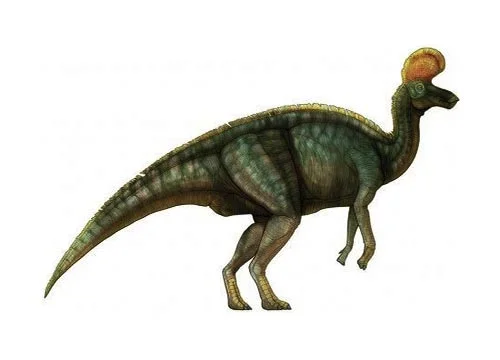Lambeosaurus (Lambe’s lizard - after the palaeontologist Lawrence Morris Lambe)

Lam-be-o-sore-us
William Parks & Levi Sternberg - 1923
Herbivore
Estimated 9 meters long
Euornithopod
L. lambei (type), L. magnicristatus
Canada - Alberta. USA - Montana. Possibly also Baja California
Late Cretaceous, 76-75 million years ago
Lambeosaurus Facts
Lambeosaurus is a genus of hadrosaurid dinosaurs that lived during the Late Cretaceous period, approximately 76-75 million years ago. The name Lambeosaurus is derived from the last name of the Canadian palaeontologist Lawrence Morris Lambe, who played a significant role in the discovery and study of fossil animals in Canada during the late 19th and early 20th centuries.
Lambeosaurus is known for its distinctive, elongated cranial crest, which resembles a hatchet or a hockey stick. This crest is believed to have been used for vocal communication, possibly to create a resonating chamber that could amplify the sounds the dinosaurs made. Lambeosaurus had a broad, duck-like beak and hundreds of tightly packed teeth that it used to grind plant material.
Lambeosaurus was a large dinosaur, measuring up to 9 meters (30 feet) in length and weighing up to 4 tons. It walked on four legs and had a long, stiff tail that helped it maintain balance. Like other hadrosaurids, Lambeosaurus was a herbivore that likely fed on a variety of vegetation, including ferns, cycads, and conifers.
The first fossils of Lambeosaurus were discovered in Alberta, Canada, in 1923 by Levi Sternberg, who was working with the Geological Survey of Canada. Since then, additional fossils have been found in North America, including in Montana, South Dakota, and Utah. Lambeosaurus is considered to be a relatively well-known dinosaur, due in part to the abundance of fossils that have been found and the unique features of its cranial crest.



